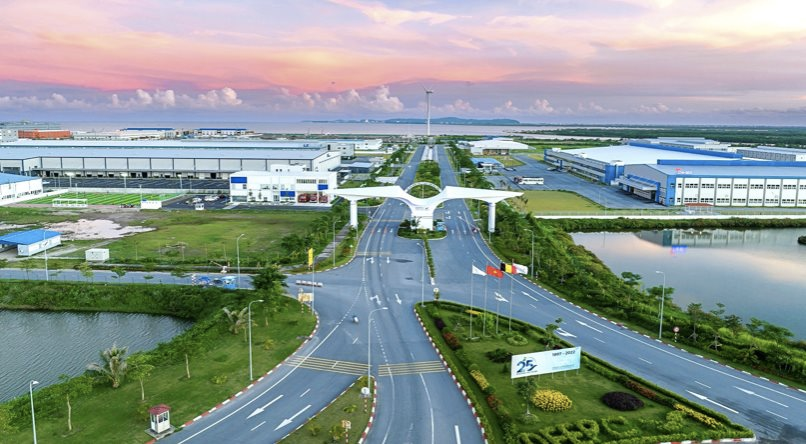Vietnam’s industrial real estate market is entering a new phase of growth, driven by strong demand, rising land rental prices, and robust foreign direct investment (FDI) inflows. Stocks of companies owning large land reserves in strategic locations—such as KBC, BCM, IDC, and SIP—are gaining investor interest for their mid- to long-term profit potential.

FDI Drives Industrial Real Estate Surge
With the residential property sector facing headwinds, industrial parks are emerging as a bright spot for investors. As of 2024, occupancy rates in industrial parks remain high—81–83% in the North and up to 92% in the South—indicating strong demand and steady cash flow for park operators.
Industrial land rental prices have continued to climb, rising 35% in the North and 67% in the South from 2020 to mid-2024. Notably, in Southern regions, rental rates increased by 10–18% in 2024 alone, underscoring resilient demand amid broader real estate challenges.
FDI remains the primary engine of growth. In the first nine months of 2024, registered FDI reached over $24.78 billion, up 11.6% year-over-year. In manufacturing alone, registered capital rose 15.7% in the first seven months, reaching $12.65 billion—highlighting persistent demand for industrial land to build factories.
Manufacturing Shift from China Accelerates
The ongoing shift of global manufacturing from China to Vietnam continues to gather momentum. In the wake of the US–China trade war and COVID-19, multinational corporations have increasingly diversified production, favoring Vietnam for its geographic advantage, skilled labor force, and stable investment climate.
Vietnamese industrial real estate stocks responded positively following the U.S. presidential election on November 6, 2024. Several tickers—KBC, SZC, SIP, VGC—hit their daily trading limits, while LHG, TIP gained over 5%, and IDC rose more than 4.5%, reflecting investor optimism about continued factory relocations into Vietnam.
Experts predict 2025 will be a breakthrough year for Vietnam’s industrial property sector. Between 2024 and 2027, the country plans to add 15,200 hectares of industrial land and 6 million square meters of warehouse space to meet investor demand—offering significant opportunities for industrial park developers.
Stock Selection Criteria for Industrial Park Investors
According to Nguyễn Anh Khoa, Head of Research at Agribank Securities (AGR), land banks and expansion potential are key valuation factors for industrial real estate stocks. Companies with large, leasable land reserves tend to have stronger long-term growth prospects and cash flow stability.
High occupancy rates and steady rental growth signal strategic location and quality infrastructure—key indicators of sustainable profitability. Meanwhile, financial health—such as cash flow, debt ratio, and management efficiency—must also be carefully assessed to minimize investment risks.
Looking Ahead to 2030
Experts expect the industrial property boom to continue through 2030, fueled by global manufacturing shifts and rising demand in second-tier provinces where land is more readily available. Next-generation FDI—involving high-tech, semiconductor, and green energy sectors—is forecast to surge, especially from partners like the U.S., China, and the EU.
This will drive the development of more specialized industrial parks with higher environmental and infrastructure standards. However, Vietnam’s sector also faces increasing competition from regional peers such as Indonesia, Thailand, and Malaysia, and must invest in sustainability, renewable energy, and waste management to remain competitive.
Investment Recommendations for Individuals
For retail investors, this is an opportune moment to consider industrial real estate stocks. Promising tickers such as KBC, IDC, BCM, SZC, and SIP offer strong mid- and long-term growth potential. However, this sector requires a long-term view and patience—it is not ideal for short-term “trading” strategies.
Investors should focus on companies with sizable land reserves, strategic locations, solid financials, and clear development plans. Monitoring macro trends such as FDI policy, foreign capital flows, and infrastructure development is essential for adjusting strategies in time